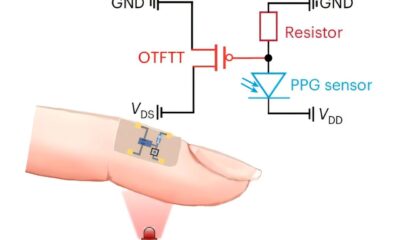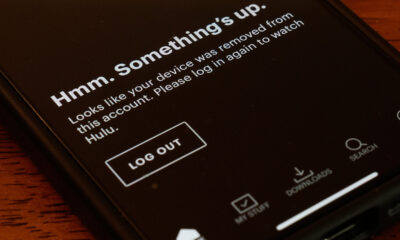Tech
Student engineers test rubble from destroyed buildings to help rebuild Ukraine
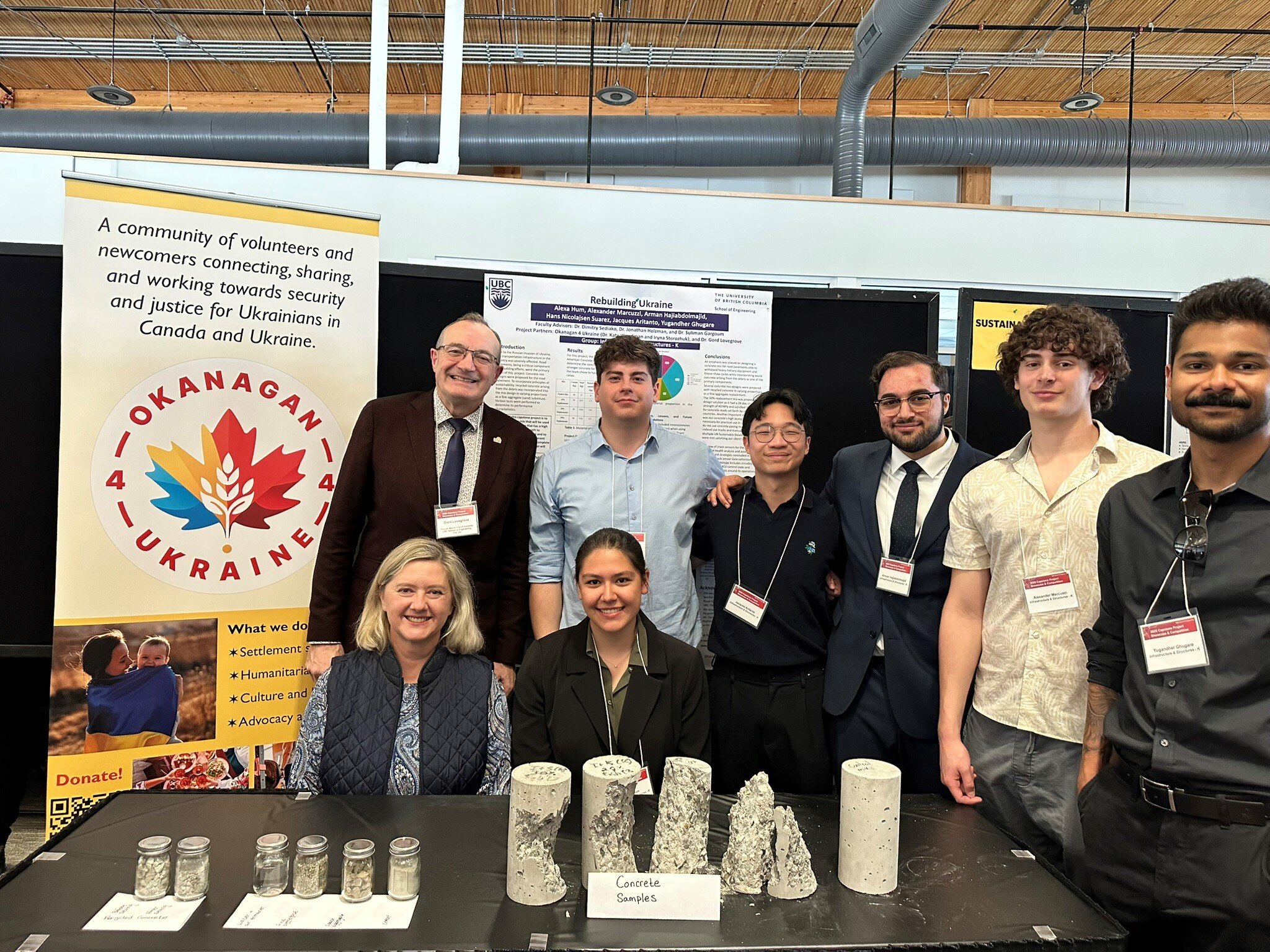
A team of UBC Okanagan students has shown that recycling rubble from destroyed buildings can help Ukraine rebuild its roads when the war eventually ends.
As part of their year-end capstone project, six School of Engineering students worked on an initiative called “Rebuilding Ukraine.” They partnered with Dr. Kate Woodman and Iryna Storozhuk, the founding members of Okanagan 4 Ukraine, and four Ukrainian engineers to test the idea of using rubble from destroyed buildings to rebuild roads.
Dr. Woodman reached out to numerous Canadian universities and organizations—including the Canada-Ukraine Chamber of Commerce, the Canadian Embassy in Ukraine, the Canadian Ukrainian Foundation and Engineers without Borders—to find groups willing to help the country.
“Of the more than 25 engineering faculties I wrote to, many said this was a new idea—finding ways to support a country during an active war,” says Dr. Woodman. “I’m glad the UBCO team took it on. This project shows how Canadian universities can contribute to humanitarian engineering and post-conflict resilience while giving students valuable international experience.”
The six students—Alexa Hum, Alexander Marcuzzi, Arman Hajiabdolmajid, Hans Nicolajsen Suarez, Jacques Aritanto and Yugandher Ghugare—worked with faculty advisors Drs. Dimitry Sediako, Jonathan Holzman, Suliman Gargoum and Gordon Lovegrove. They explored using the ruins of buildings to create the right type of concrete strong enough to rebuild the road network.
Arman Hajiabdolmajid, who is finishing his studies at UBCO this year, explains that the team designed a strong, reliable concrete mix that can be used as a solid and reliable road surface to rebuild the country’s existing but heavily damaged transportation infrastructure.
“Due to the ongoing war, there are large amounts of waste material in the form of rubble and debris, and if not put to use, will end up in landfills and eventually overwhelm the country’s waste system,” says Hajiabdolmajid. “By recycling the concrete rubble as a replacement for aggregate, a major component in concrete, we can put this rubble to good use rather than discarding it.”
He adds that recycling rubble also helps reduce the need to extract the traditional fine and coarse aggregate from riverbeds and quarries, as the recycled concrete proves to be a suitable substitution.
“As rebuilding begins, demand for materials will increase, potentially depleting local reserves. This could lead to costly imports as substitutes,” he adds. “And the country’s waste system is not designed to process the amount of waste material produced from this war.”
A typical concrete mix consists of cement, fine aggregate or sand, gravel or coarse aggregate, water and additives that enhance the final product. To reuse rubble from Ukraine, the debris must be crushed into fine sand. This involves gathering and transporting the damaged concrete to a processing site where materials like metal, plastic, glass and wood are removed and disposed of properly.
In the UBCO lab, the students gathered concrete waste from past experiments to create a solution that included the highest volume of recycled fine aggregate while still meeting strength requirements. They used compression testing to monitor the concrete’s strength after seven, 14 and 28 days.
Although concrete roads are not common in Ukraine, the team chose concrete over asphalt because it has a longer lifespan. Reusing rubble also supports some United Nations Sustainable Development Goals and makes the mix more environmentally friendly. The students created a sustainable, high-performance concrete using 30% recycled aggregate. It passed lab testing at UBCO and exceeded benchmarks required for European road infrastructure. To complete the project, they also created a prototype sensor to detect internal concrete cracks or instability.
Dr. Jonathan Holzman, an electrical engineering professor, says this innovative approach helps solve resource scarcity and sustainability problems.
“Our capstone projects give students hands-on, real-world experiences before they even graduate. Working with the Okanagan 4 Ukraine team and engineers in Ukraine gave these students the opportunity to make a difference in a country that will—hopefully, one day soon—begin the path to reconstruction.”
Citation:
Student engineers test rubble from destroyed buildings to help rebuild Ukraine (2025, October 22)
retrieved 22 October 2025
from https://techxplore.com/news/2025-10-student-rubble-destroyed-rebuild-ukraine.html
This document is subject to copyright. Apart from any fair dealing for the purpose of private study or research, no
part may be reproduced without the written permission. The content is provided for information purposes only.
Tech
Five ways to make AI more trustworthy

Self-driving taxis are sweeping the country and will likely start service in Colorado in the coming months. How many of us will be lining up to take a ride? That depends on our level of trust, says Amir Behzadan, a professor in the Department of Civil, Environmental and Architectural Engineering, and a fellow in the Institute of Behavioral Science (IBS) at CU Boulder.
He and his team of researchers in the Connected Informatics and Built Environment Research (CIBER) Lab at CU Boulder are unearthing new insights into how the artificial intelligence (AI) technology we might encounter in daily life can earn our confidence. They’ve created a framework for developing trustworthy AI tools that benefit people and society.
In a new paper in the journal AI and Ethics, Behzadan and his Ph.D. student Armita Dabiri drew on that framework to create a conceptual AI tool that incorporates the elements of trustworthiness.
“As a human, when you make yourself vulnerable to potential harm, assuming others have positive intentions, you’re trusting them,” said Behzadan. “And now you can bring that concept from human–human relationships to human–technology relationships.”
How trust forms
Behzadan studies the building blocks of human trust in AI systems that are used in the built environment, from self-driving cars and smart home security systems to mobile public transportation apps and systems that help people collaborate on group projects. He says trust has a critical impact on whether people will adopt and rely on them or not.
Trust is deeply embedded in human civilization, according to Behzadan. Since ancient times, trust has helped people cooperate, share knowledge and resources, form communal bonds and divvy up labor. Early humans began forming communities and trusting those within their inner circles.
Mistrust arose as a survival instinct, making people more cautious when interacting with people outside of their group. Over time, cross-group trade encouraged different groups to interact and become interdependent, but it didn’t eliminate mistrust.
“We can see echoes of this trust-mistrust dynamic in modern attitudes toward AI,” says Behzadan, “especially if it’s developed by corporations, governments or others we might consider ‘outsiders’.”
So what does trustworthy AI look like? Here are five main takeaways from Behzadan’s framework.
1. It knows its users
Many factors affect whether—and how much—we trust new AI technology. Each of us has our own individual inclination toward trust, which is influenced by our preferences, value system, cultural beliefs, and even the way our brains are wired.
“Our understanding of trust is really different from one person to the next,” said Behzadan. “Even if you have a very trustworthy system or person, our reaction to that system or person can be very different. You may trust them, and I may not.”
He said it’s important for developers to consider who the users are of an AI tool. What social or cultural norms do they follow? What might their preferences be? How technologically literate are they?
For instance, Amazon Alexa, Google Assistant and other voice assistants offer simpler language, larger text displays on devices and a longer response time for older adults and people who aren’t as technologically savvy, Behzadan said.
2. It’s reliable, ethical and transparent
Technical trustworthiness generally refers to how well an AI tool works, how safe and secure it is, and how easy it is for users to understand how it works and how their data is used.
An optimally trustworthy tool must do its job accurately and consistently, Behzadan said. If it does fail, it should not harm people, property or the environment. It must also provide security against unauthorized access, protect users’ privacy and be able to adapt and keep working amid unexpected changes. It should also be free from harmful bias and should not discriminate between different users.
Transparency is also key. Behzadan says some AI technologies, such as sophisticated tools used for credit scoring or loan approval, operate like a “black box” that doesn’t allow us to see how our data is used or where it goes once it’s in the system. If the system could share how it’s using data and users could see how it makes decisions, he said, more people might be willing to share their data.
In many settings, like medical diagnosis, the most trustworthy AI tools should complement human expertise and be transparent about their reasoning with expert clinicians, according to Behzadan.
AI developers should not only try to develop trustworthy, ethical tools, but also find ways to measure and improve their tools’ trustworthiness once they are launched for the intended users.
3. It takes context into account
There are countless uses for AI tools, but a particular tool should be sensitive to the context of the problem it’s trying to solve.
In the newest study, Behzadan and co-researcher Dabiri created a hypothetical scenario where a project team of engineers, urban planners, historic preservationists and government officials had been tasked with repairing and maintaining a historical building in downtown Denver. Such work can be complex and involve competing priorities, like cost effectiveness, energy savings, historical integrity and safety.
The researchers proposed a conceptual AI assistive tool called PreservAI that could be designed to balance competing interests, incorporate stakeholder input, analyze different outcomes and trade-offs, and collaborate helpfully with humans rather than replacing their expertise.
Ideally, AI tools should incorporate as much contextual information as possible so they can work reliably.
4. It’s easy to use and asks users how it’s doing
The AI tool should not only do its job efficiently, but also provide a good user experience, keeping errors to a minimum, engaging users and building in ways to address potential frustrations, Behzadan said.
Another key ingredient for building trust? Actually allowing people to use AI systems and challenge AI outcomes.
“Even if you have the most trustworthy system, if you don’t let people interact with it, they are not going to trust it. If very few people have really tested it, you can’t expect an entire society to trust it and use it,” he said.
Finally, stakeholders should be able to provide feedback on how well the tool is working. That feedback can be helpful in improving the tool and making it more trustworthy for future users.
5. When trust is lost, it adapts to rebuild it
Our trust in new technology can change over time. One person might generally trust new technology and be excited to ride in a self-driving taxi, but if they read news stories about the taxis getting into crashes, they might start to lose trust.
That trust can later be rebuilt, said Behzadan, although users can remain skeptical about the tool.
For instance, he said, the “Tay” chatbot by Microsoft failed within hours of its launch in 2016 because it picked up harmful language from social media and began to post offensive tweets. The incident caused public outrage. But later that same year, Microsoft released a new chatbot, “Zo,” with stronger content filtering and other guardrails. Although some users criticized Zo as a “censored” chatbot, its improved design helped more people trust it.
There’s no way to completely eliminate the risk that comes with trusting AI, Behzadan said. AI systems rely on people being willing to share data—the less data the system has, the less reliable it is. But there’s always a risk of data being misused or AI not working the way it’s supposed to.
When we’re willing to use AI systems and share our data with them, though, the systems become better at their jobs and more trustworthy. And while no system is perfect, Behzadan feels the benefits outweigh the downsides.
“When people trust AI systems enough to share their data and engage with them meaningfully, those systems can improve significantly, becoming more accurate, fair, and useful,” he said.
“Trust is not just a benefit to the technology; it is a pathway for people to gain more personalized and effective support from AI in return.”
More information:
Amir Behzadan et al, Factors influencing human trust in intelligent built environment systems, AI and Ethics (2025). DOI: 10.1007/s43681-025-00813-6
Citation:
Five ways to make AI more trustworthy (2025, October 22)
retrieved 22 October 2025
from https://techxplore.com/news/2025-10-ways-ai-trustworthy.html
This document is subject to copyright. Apart from any fair dealing for the purpose of private study or research, no
part may be reproduced without the written permission. The content is provided for information purposes only.
Tech
Tinder Launches Mandatory Facial Verification to Weed Out Bots and Scammers
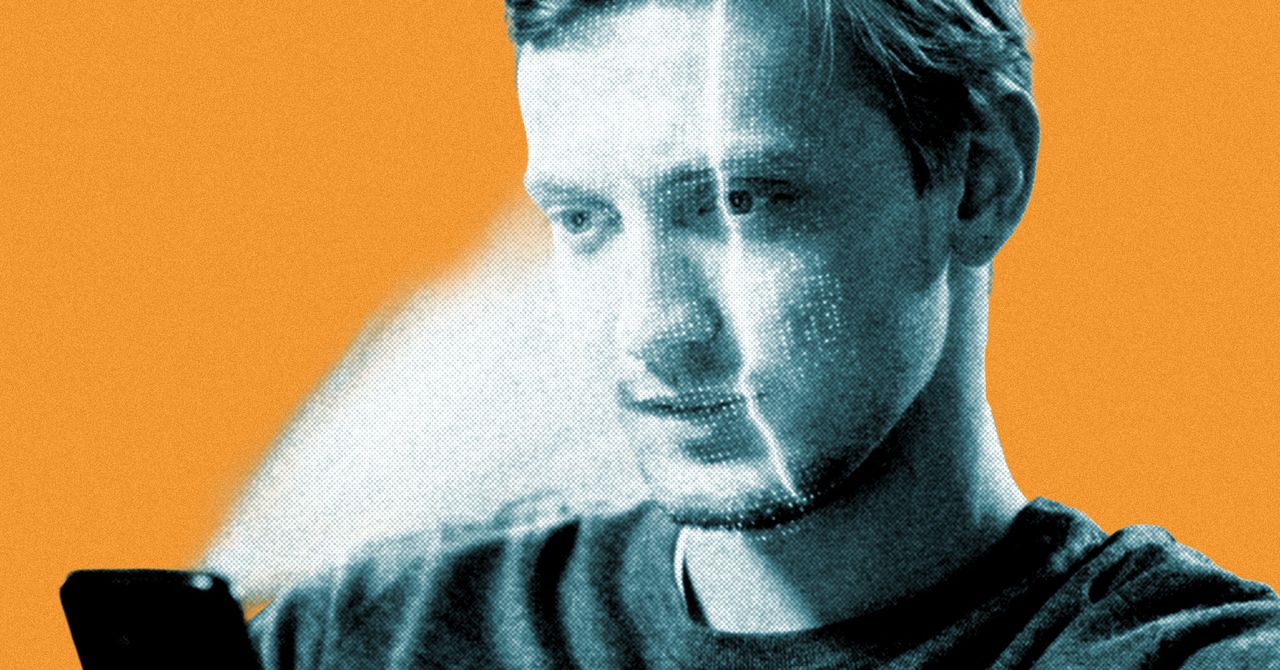
On Wednesday, Tinder announced that it is rolling out a mandatory facial verification tool for new users in the US to help combat the spread of fake profiles and weed out “bad actors.”
Tinder claims its mandatory facial integration feature, called Face Check, is a first for a major dating app. During the sign-up process, new members complete a “liveness check” by taking a short video selfie within the app. The procedure collects and stores an encrypted map of information about the shape of the user’s face. “We don’t store a picture of your face, it’s not photo recognition, it’s data points about the shape of your face that are turned into a mathematical hash,” says Yoel Roth, head of Trust and Safety for Match Group, which owns Tinder. Tinder then uses that “hash” to check whether a new sign-up matches an account that already exists on Tinder.
Face Check is currently available to users in California, which will be followed by Texas and other states.
In a news release, Roth said the measure “sets a new benchmark for trust and safety across the dating industry” and “it helps tackle one of the hardest problems online, knowing whether someone is real … while adding meaningful obstacles that are difficult for bad actors to circumvent.”
The company defines “bad actors” as accounts that engage in deceptive behavior, including spamming, scamming, and bots. Currently 98 percent of the content moderation actions on Tinder address fake accounts, scamming, and spam. “There is a significant volume of the overall trust and safety work we do on Tinder that is focused on this challenge.”
Roth says it is a “meaningful improvement in our ability to address scaled abuse. You can get new phone numbers, new email addresses, new devices, you can’t really get a new face.”
The company is aware that asking new members to scan their faces might be seen as a privacy issue, but “theoretically, if somebody were to get access to every single one of these hashes that’s been created, there isn’t really anything they could do.”
The app’s previous verification methods were voluntary. Members, depending on their jurisdiction, could opt to verify their profiles through a selfie or ID process. Other dating apps like Bumble also use facial recognition software to let daters verify their authenticity, but on a voluntary basis.
When asked what the app plans to do about the fake profiles that already exist, given Face Check applies only to new users, Roth says the tech is most effective in curbing “the biggest issue that we’re concerned with, which is the bulk creation of new accounts.”
Tech
Sorry, Your Friend Is Now an Annoying Rock Jock. Here’s What to Get Them

Here’s what to get for your friend with the fiddly little fingers and stinky feet.
Source link
-

 Tech6 days ago
Tech6 days agoWhy the F5 Hack Created an ‘Imminent Threat’ for Thousands of Networks
-
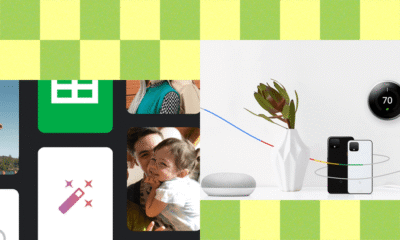
 Tech1 week ago
Tech1 week agoWhat Is Google One, and Should You Subscribe?
-

 Tech3 days ago
Tech3 days agoHow to Protect Yourself Against Getting Locked Out of Your Cloud Accounts
-

 Fashion1 week ago
Fashion1 week agoItaly to apply extra levy on Chinese goods to safeguard its own fashion industry
-

 Business1 week ago
Business1 week agoBaroness Mone-linked PPE firm misses deadline to pay £122m
-

 Sports1 week ago
Sports1 week agoBrewers player ripped for avoiding hit-by-pitch that would have tied game: ‘All he had to do was stand there’
-

 Fashion1 week ago
Fashion1 week agoSelf-Portrait unveils high-profile Apple Martin campaign
-

 Tech1 week ago
Tech1 week agoYou Can Get 4 Apple Airtags for $65 Right Now




